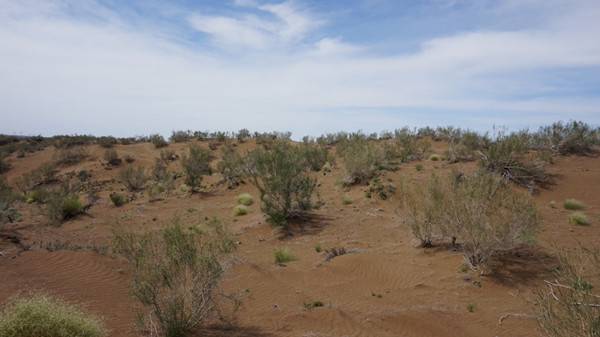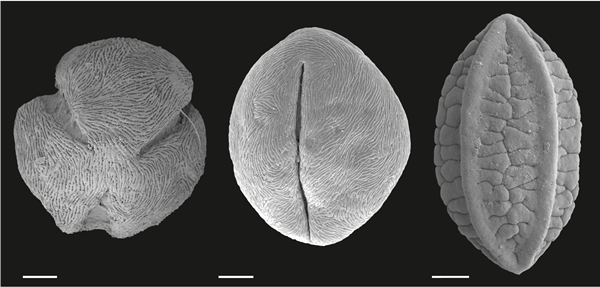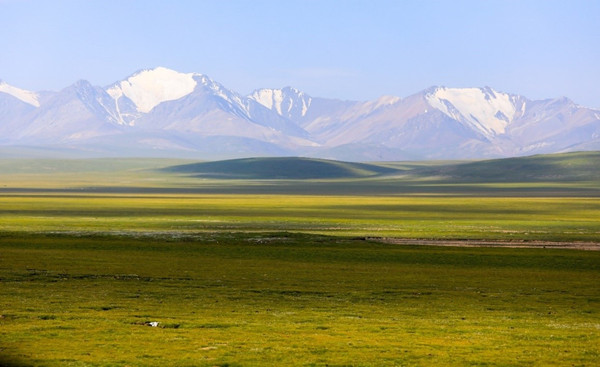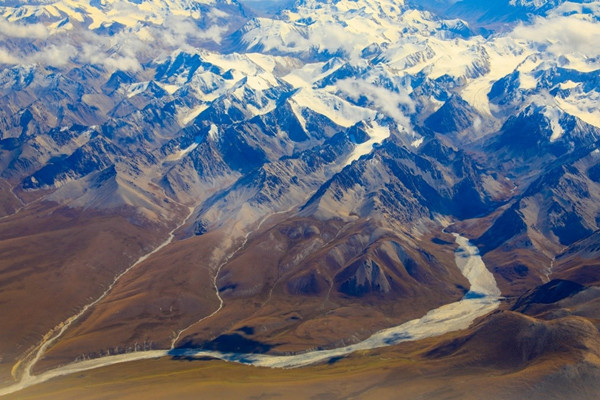
Thirty-four million years ago, sudden climate change caused ecological breakdown in Central Asia. Deserts spread across the lowlands, and biological diversity was permanently affected. These are the findings by an international team, led by researchers from the University of Amsterdam, Stockholm University, and the CNRS (France). Their results are now published in the scientific journal Science Advances.
The study integrated fossil pollen (the reproductive material of plants) from Asia with geological, faunal, and climate datasets. This revealed an ecological catastrophe around 34 million years ago, caused by rapid changes in climate and atmospheric carbon dioxide. Large areas of Mongolia, Tibet, and northwestern China became hyperarid deserts with little vegetation cover. Larger animals were mainly replaced by small mammals like rodents. Now, deserts are once again expanding rapidly across the region, possibly signalling new ecological devastation.
Unique biological diversity
"The results have major implications for future biodiversity, agriculture, and human wellbeing," said Dr. Natasha Barbolini, lead author and researcher in palaeoecology at the University of Amsterdam (now at Stockholm University). "Evidence from the past shows us that the Central Asian region will never recover its unique biological diversity if desertification continues."
The study follows the model predictions from the Intergovernmental Panel on Climate Change (IPCC) and recent climate records showing that interior Asia is fast becoming one of the hottest and driest places on the planet. Climate change, such as witnessed 34 million years ago, may once more lead to irreversible ecosystem change and loss of biodiversity.
Ancient climate change and mountain building
"Piecing together 43 million years of evolution allowed us to understand resilience of these ecosystems in a completely new way," said Dr. Carina Hoorn, co-lead author and Associate Professor at the University of Amsterdam's Institute for Biodiversity and Ecosystem Dynamics. "Even though some of the plants that once dominated still exist in the region today, they are relatively rare. This shows that populations can be permanently altered by rapid climate change, even if widespread extinctions don't occur."
The study found that modern Asian biodiversity has been shaped by these ancient climatic changes, but also by mountain building and formation of the Tibetan Plateau. "Central Asia, once covered by a vast shallow sea, has become one of the driest places on Earth due to the collision of India with Asia and the uplift of the Himalayan mountain range," said Guillaume Dupont-Nivet at CNRS (France) that oversees the project funded by the European Research Council.
Today Central Asia is home to some of the oldest deserts known, as well as the highest mountains outside of the Himalayas. This geological and climatic diversity has generated an astonishing number of species who call the region home. But now, these species are under threat from present-day climate change - along with almost half a billion people, who are finding it increasingly difficult to eke out a living. Crops are ravaged by drought, and the growing seas of sand are claiming native steppes needed for grazing livestock.
Lost to the desert
"These modern herb-dominated steppes only emerged when the climate became temporarily wetter, about 15 million years ago. Before that it was simply too dry," explained Amber Woutersen, co-lead author and research associate at the Institute for Biodiversity and Ecosystem Dynamics, University of Amsterdam. "Our results show that once the process of desertification begins, it can spread rapidly and last for millions of years. This is because vegetation prevents erosion and concentrates water and nutrients in the topsoil. If that vegetation is lost, it cannot easily reappear."
In the article, fittingly published in the International Year of Plant Health, the authors caution that Asian steppes are being modified for human use and lost to desertification at unprecedented rates. This trend must be reversed to preserve what has now become one of the most endangered terrestrial biomes in the world.
The study entitled "Cenozoic evolution of the steppe-desert biome in Central Asia" was published in Science Advances on Oct. 9. (Text by Carina Hoorn)

The desert-steppes in the southern Gurbantunggut Desert, where vegetation cover is less than 30%. One of the only plants that can grow in the sandy soils is saxaul (Haloxylon ammodendron), a shrub that is at risk of extinction. (Image by ZHANG Hongxiang, Xinjiang Institute of Ecology and Geography, Chinese Academy of Sciences)

Scanning electron microscope (SEM) images of fossil pollen used to reconstruct the ancient ecosystems of Central Asia; from left, Nitraria sp. (polar view), Nitraria sp. (equatorial view), and Ephedra sp. (equatorial view). These drought- and salt-tolerant shrubs dominated landscapes in the late Eocene (40 to 34 million years ago), but are now rare plants in the Asian steppes. Scale bars represent 5 μm (1 μm = 0.001 mm). Photo credits: Nitraria pollen was photographed by Carina Hoorn at the Xinjiang Institute of Ecology and Geography, Chinese Academy of Sciences, and the Department of Paleontology, University of Vienna. The middle image was previously published in Hoorn et al. (2012), doi:10.1016/j.palaeo.2012.05.011. Ephedra pollen was photographed by Fang Han at Stockholm University.

Sand sea of the Taklamakan Desert, the world's second largest shifting sand desert, which is slightly smaller than Germany. Similar hyperarid deserts may have spread across Central Asia in the past as a result of ecological breakdown caused by rapid climate change. (Image by Matthias Alberti, distributed via imaggeo.egu.eu)

Meadow steppes in the Qilian Mountains of northern China, surrounded by alpine steppe and tundra habitats. Topographic growth in the Tibetan region over many millions of years has created new high-elevation ecosystems for cold-tolerant biota to thrive. (Image by WANG Xiaoming, distributed via imaggeo.egu.eu)

The Tian Shan, meaning the Mountains of Heaven, is a large mountain range in Central Asia. The variation in altitude created by this and other mountain ranges across Central Asia, generates a wide range of habitats, and therefore, high biodiversity within the steppe-desert biome. (Image by WANG Xiaoming, distributed via imaggeo.egu.eu)

86-10-68597521 (day)
86-10-68597289 (night)

52 Sanlihe Rd., Xicheng District,
Beijing, China (100864)

